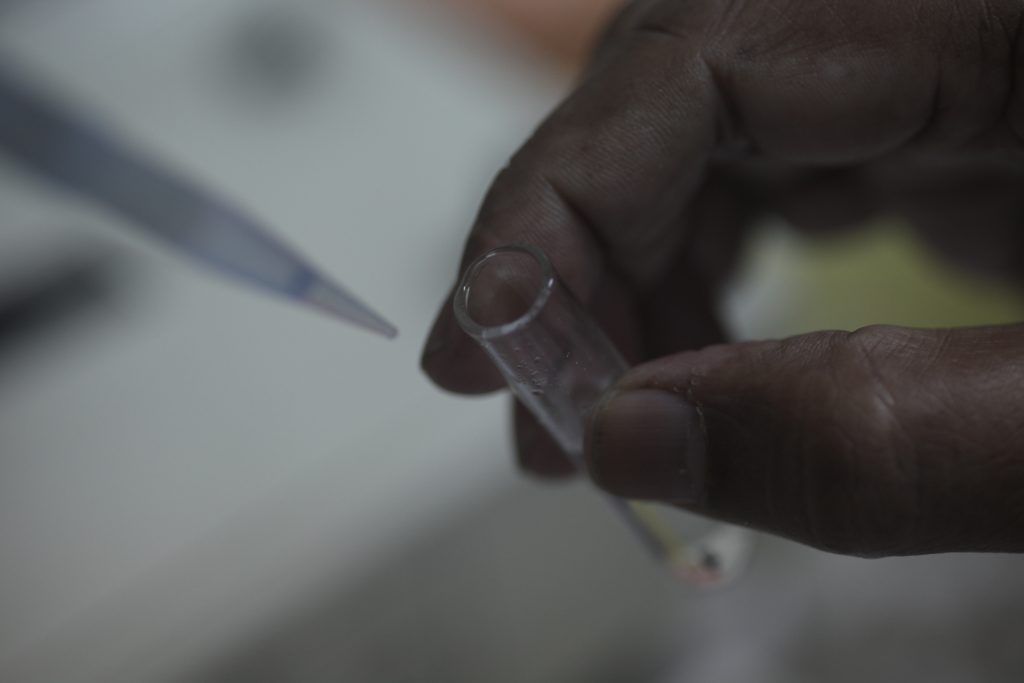
Objective:
The study is enrolling otitis media cases to elucidate the effectiveness and impact of PCV-10 using the before (pre-vaccine) after (post-vaccine) design. This outpatient based project will give additional attention on the impact of PCV-10 on cross protecting serotypes and Non-Typable H.influenzae (NTHi).
Funding source: Pfizer
Background and Rationale:
Streptococcus pneumoniae is a major cause of mortality and morbidity among children worldwide. In 2006, the World Health Organization (WHO) recommended inclusion of pneumococcal conjugate vaccines (PCV) in routine immunization program of all countries as well as impact assessments of the routine use of PCV for prevention of invasive disease, pneumonia and otitis media (OM) 1. Bangladesh introduced ten-valent pneumococcal conjugate vaccine (PCV-10) in its national immunization program in March, 2015. The decision of introducing PCV was made based on the evidence from multi-year data on burden of Invasive Pneumococcal Diseases (IPD) in Bangladesh2-4. However, the studies also showed that Bangladesh has widely diverse (50 different serotypes among 752 IPD cases) pneumococcal serotype leading to low coverage (46%; range 29 – 57%) of PCV-10 (including 6A), and addition of 19A will increase the serotype coverage by 4%.
WHO has emphasized the importance of continued high quality laboratory-based surveillance data for quantifying and understanding the impact of PCV in the years following its introduction in routine programs5. In order to estimate burden of otitis media among urban Bangladeshi children, Child Heath Research Foundation (CHRF) established surveillance at the Ear Nose and Throat (ENT) department of Out Patient Department (OPD) of Dhaka Shishu Hospital (DSH) in mid-2013. From July, 2013 to March, 2015, the otitis media surveillance enrolled 1743 children of all age with otitis media, among whom 1385 (79.5%) were with spontaneous perforation (Otorrhoea). Among the otorrhoea cases, 731 (52.7%) showed positive result for any of the true causative agent for Otitis Media. Microbiological analysis of these cases showed the predominance of Haemophilus influenzae (38.9%; 285/731) and S. pneumoniae (33.7%; 246/731). Forty-five pneumococcal serotypes were identified; 19F was the most predominant serotype (39/246; 15.8%) followed by 19A (31/246; 12.6%), 3 (17.6/246; 6.9%) and 14 (14/246; 5.7%). Among a subset of Haemophilus influenzae isolates, almost all (1/55, 1.8%) were Non-typeable (NTHi). Overall, the serotypes included in PCV-10 and PCV-13 cover 46% and 65% of the pneumococcal serotypes (Saha et al, Unpublished data), respectively. This difference is only caused by the high prevalence of 19A (31/246; 12.6%) as 6A was included with PCV-10 serotypes while calculated coverage of PCV-10 given the fact that 6A will be cross-protected by the antibody developed against 6B.
PCV impact studies in Bangladesh are of high, not only due to diverse distribution of serotypes and low proportion of vaccine serotypes, but also for high prevalence of 19A and NTHi. It is anticipated that we will continue to see substantial number of pneumococcal disease with non-vaccine types with the disappearance of vaccine types5-6. Further, there is a believe that antibody against 19F gives cross protection against 19A, and the conjugated protein D of NTHi protects NTHi infection. Our baseline data with high number of otitis media caused by 19A and NTHi will possibly able to shed light on that fact and clear the confusion around cross-protection against 19A by 19F and protection against NTHi by conjugated protein of PCV.
The researchers and policy makers of Bangladesh are aware about these possibilities, and keen to see the overall benefit of this live saving vaccine on Bangladeshi children and beyond. Data on country specific impact of PCV is important for the policy makers in decisions making process to continue the investment for this expensive vaccine, while GAVI funding declines over time. These data will also be important for Bangladesh to judge the possibly added value of PCV with broader coverage of serotypes
Considering unique epidemiology of pneumococcal diseases, Bangladesh will need multiple modalities of surveillances with a diverse set of clinical outcomes to generate convincing evidence of total PCV impact for sustained policy support for PCV, particularly in the post GAVI funding period. Researchers in Bangladesh have already planned and secured support (WHO, IHME, BMGF and GSK) to assess the impact of PCV on IPD and Pneumococcal carriage in urban and rural population. However, there is no initiative yet to investigate the impact of PCV on otitis media, though otitis media affects about 80% of the children by the age of 5 years 7.
Here we propose to measure the effectiveness and the impact of PCV on otitis media using multiple modalities in urban and rural Bangladesh. Though IPD is the ideal way to measure the impact of PCV, this study is expected to generate well-founded and arguable evidences on the overall and serotype specific impact of PCV. This study has the strength as it will capture a large number of the serotypes. The study as a whole will reveal the dynamics of over all vaccine and non-vaccine types, and also the specific vaccine and non-vaccine types during the post PCV period in Bangladesh.
